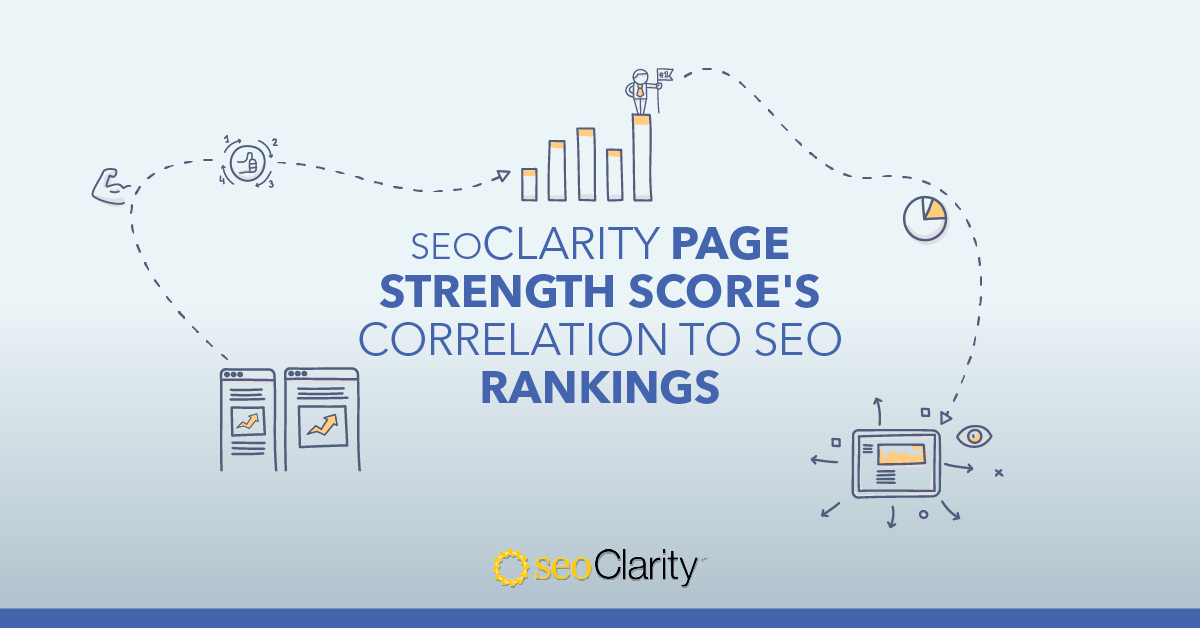Prioritizing keyword opportunities is about more than just looking at high search demand or high cost per click (CPC) keywords in Google Keyword Planner.
When you have a large site packed with content, you need to focus on a range of metrics to improve your search visibility and gain more organic traffic. One significant data point to identify low-hanging fruit opportunities is the keyword difficulty score.
This critical SEO metric helps you prioritize target keywords or phrases that would be easier to obtain based on how competitive the query is relative to what sites currently rank.
Let’s dive into the makeup of a keyword difficulty score, where it fits into your overall SEO strategy, and assess the accuracy of traditional keyword difficulty checkers.
Table of Contents:
- What Is a Keyword Difficulty Score and Why Should You Care?
- What Factors Influence How Google Determines Rankings?
- Why Backlink Quality and Quantity Shouldn’t Be the ONLY Measures of Keyword Difficulty
- Common Approaches to Determining Keyword Difficulty
- How Keyword Difficulty Scores are Calculated By Various SEO Tools
- A Different Approach: seoClarity Keyword Difficulty with Page Strength
What Is a Keyword Difficulty Score and Why Should You Care?
Keyword difficulty is an SEO metric that estimates how challenging it is to secure top-ranking positions in the SERPs for a specific keyword.
It's typically expressed as a number or percent, with higher values indicating greater difficulty. In some cases, the score may be represented as a range such as low, medium, or high. As you’ll see below, keyword difficulty scores can vary widely depending on which SEO platform or tool you use.
So why do these scores matter from an SEO perspective?
Well, keyword difficulty scores help SEOs prioritize keyword efforts and spot low-hanging fruit in their strategies. Targeting these relatively easy ranking opportunities not only has short-term benefits by quickly directing traffic to your website, but doing so also has potential long-term advantages.
For example, optimizing content around long-tail, low-hanging fruit keywords gradually forms topic clusters. This helps search engines recognize your website as an authority on that topic and improves your chances of ranking for more competitive keywords.
seoClarity Tip: Don't confuse “keyword difficulty” with “keyword competition.” In Google’s keyword planner, “competition” refers to paid search results whereas “keyword difficulty” only applies to organic search results.
What Factors Influence How Google Determines Rankings?
No one really knows the exact process by which Google selects top-ranking pages for specific queries. And, over the years, Google’s methods for determining SERP rankings have grown increasingly sophisticated and complex.
In the early days, there were only two primary data points Google used to determine rankings:
- Simple Relevance - how many times a keyword appears on a page.
- Simple Authority - how many links to the page are there from other domains (PageRank).
Since 2015, Google has integrated machine learning into its search algorithm to enhance its comprehension of human language, both in webpage content and search queries.
This means that the criteria for a page to rank well in Google has also become more sophisticated and complex. But it all still starts with keywords.
And now with the introduction of BARD and Google Search Generative Experience, generative AI will continue to evolve how Google uses sites and ranks them within its generative results.
Why Backlink Quality and Quantity Shouldn’t Be the ONLY Measures of Keyword Difficulty
Google continues to build its ranking algorithms around factors much more sophisticated than links. As such, SEO keyword difficulty tools that primarily base their scores on the quality and quantity of backlinks to top-ranking pages for a given keyword will become increasingly inaccurate and therefore irrelevant.
Just take it from Google Search Advocate John Mueller, who predicts that the influence of backlinks as a ranking factor will further diminish in the future. In a live Brighton SEO session, Mueller remarked:
Well, it’s something where I imagine, over time, the weight on the links at some point will drop off a little bit as we can figure out a little bit better how the content fits in within the context of the whole web.
And he's not the only one to validate the decreasing importance of backlinks as a ranking signal. Gary Illyes from the Google Search team has also stated that links aren't even a top three ranking factor for Google and haven't been for a while.
This shift means that enterprises need to base keyword difficulty on a number of different factors and not just backlinks.
Common Approaches to Determining Keyword Difficulty
The keyword difficulty score that an SEO tool or platform provides reflects its unique philosophy about what it takes to rank higher, and (one hopes) some research into the commonalities of top-ranking pages.
Below, we’ll address some of the most common methods for determining keyword difficulty scores.
Backlink Quantity and Quality
The most common approach to determining keyword difficulty is to simply measure the quality and number of backlinks that appear in the top ten SERPs for a keyword. The more backlinks from sources with high authority, the higher the keyword's difficulty score.
As you’ll see below in our summary of keyword difficulty in various SEO tools, some tools rely solely on the number of linking domains to determine keyword difficulty. Others, however, incorporate domain or page authority scores, assuming that linking domains or pages possess quantifiable authority that impacts how much “juice” they pass on to your page.
The problem with this approach is it overemphasizes backlinks as Google's primary ranking factor. But Google has become more sophisticated in its ability to sniff out the most useful content for a given query and less dependent on backlinks for ranking.
A multi-year study by Eric Enge revealed a declining correlation between the number of backlinks to a page and its ability to rank highly year over year.
That is not to say that links don’t matter at all. For newer sites in particular, earning high-quality links from relevant websites can certainly help boost rankings more quickly. But it’s clear that breaking into top rankings for key topics requires far more than inbound links these days.
Other Metrics in Keyword Difficulty Scores
A few keyword difficulty tools attempt to supplement backlink data with other factors they think contribute to ranking. These often include:
- Search volume
- Estimated CTR
- The presence of special search features on the SERP
But it’s clear most tools rely heavily on backlink data as their primary ranking consideration, perhaps because it’s easiest to quantify and SEOs are familiar with links as a ranking signal.
How Keyword Difficulty Scores are Calculated By Various SEO Tools
Here's a summary of what we know about how keyword difficulty scores are determined in various SEO tools and platforms:
- Semrush bases 2/3 of it's score on backlinks. Specifically, the number of links to high-ranking pages and the “authority scores” of the domains from which they come. They also take into account search volume and the presence of SERP features on a keyword results page. Their correlation research was done on a relatively small set of keywords (about 120,000).
- Ahrefs bases its keyword difficulty score entirely on the number of linking domains to the top 10 ranking pages for a keyword. No other factors are used that we could find.
- Brightedge has a keyword difficulty score, but no public information on how it is calculated.
- Conductor does not have a keyword difficulty score according to their website.
- Moz’s score is based on their proprietary Page Authority and Domain Authority metrics of results ranking on the first page of Google. They also claim to “intelligently modify” their score using projected CTR for each page’s result.
- Similarweb has a difficulty score, but no public information on how it is calculated. However, in a blog post about the topic they seem to agree with Ahref’s contention that backlinks are enough.
- SEO PowerSuite Rank Tracker is based on the backlink profiles of top-ranking pages.
- Ubersuggest assigns a domain score to the top 20 ranking pages based on the number of backlinks to each. They also claim to measure the “depth and richness” of content on the pages, but give no details on how they quantify that.
- KWFinder uses a combination of Moz DA and PA and Majestic Citation Flow and Trust Flow, all measurements of link authority.
This research study from Moz outlines how well these tools perform in predicting keyword difficulty. While the study is a bit dated (2018), the methods of these tools have not changed. As such, the correlations are likely still about the same (or worse, considering their backlink-based scores are increasingly distant from the ways Google actually ranks pages today).
The main takeaway of the research is that the correlation of the scores for these tools is about 8-12% better than flipping a coin.
A Different Approach: seoClarity Keyword Difficulty with Page Strength
While surveying the existing attempts at formulating a keyword difficulty score, we at seoClarity recognized a critical need in the industry. SEOs required a more accurate keyword difficulty score that considers the numerous factors influencing ranking today. This score also needed to be backed by extensive research and statistical proof.
So we took over two years to build one from the ground up.
Our keyword difficulty tool uses billions of data points from over six years of data in our vast Research Grid dataset to calculate an accurate score.
Our aim was nothing less than building a keyword difficulty model with proven high correlation to how pages rank today and in the future.
And we did it.
seoClarity Page Strength
The accuracy of seoClarity’s Keyword Difficulty Score is grounded in our proprietary Page Strength score. This score is based on over 30 billion URLs and petabytes of data to determine the topical strength of a page and includes content, SERP data, search volume, backlinks, trends, volatility and much more.
We don’t just correlate this data once-and-done. Page Strength is validated daily across millions of keywords.
This allows us to assign a keyword difficulty score to your newest pages based on your existing authority for the topic, and then grow the accuracy of that score over time as more metrics come in.
seoClarity Keyword Difficulty
We use Page Strength to determine the level of keyword difficulty for every keyword in our Research Grid dataset. In addition to assigning a numeric (1-100) score for keyword difficulty, we also group each keyword into color-coded categories of low, medium, or high difficulty.
This simple three-level difficulty indicator makes it easy to quickly determine how difficult it is to rank for each keyword without overthinking the difference between a score of 89 and 92. It tells you what you need to know to bucket and prioritize potential keywords.
Want to see our keyword difficulty score in action? Click the orange "see a demo" button at the top of this page and we’ll be glad to show you!
Final Thoughts
We get it, integrating keyword difficulty scores into your keyword research can feel like a tricky job with so much to consider.
Make this task easy with seoClarity’s Keyword Difficulty score. With a more accurate approach to calculating keyword difficulty, you can say goodbye to manually identifying searchers’ intent and juggling topics, categories, and keywords.







2 Comments
Click here to read/write comments